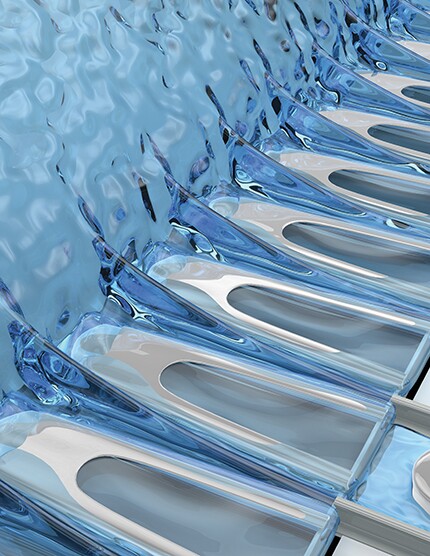Liquid diodes
DOI: 10.1063/PT.3.3799
Perhaps most associated with ink-jet printing, the field of droplet-based microfluidics has seen an explosion of interest over the past two decades for such applications as chemical and materials synthesis and single-cell incubators. Although many living organisms can transport liquids at small scales with impressive precision and efficiency, fashioning devices with reliable, directed, fast liquid transport remains a challenge. The principal impediment is the undesirable pinning of the droplet edge by surface defects.

Zuankai Wang of the City University of Hong Kong, Manoj Chaudhury of Lehigh University, and their colleagues have figured out a way to turn that weakness to their advantage. They’ve fabricated a two-dimensional array of U-shaped structures, each roughly 150 µm × 50 µm with a 5 µm cavity etched underneath; short walls separate adjacent structures. The surface’s special topography produces asymmetric pinning and acts like a liquid diode: The fluid flows in only one direction. As seen in this microscope image, the U-shaped islands’ serif-like overhangs strongly pin one side of a liquid droplet, preventing the edge from advancing. At the same time, the channels between the islands and the adjacent walls facilitate the spontaneous, rapid transport of liquids in the opposite direction in a domino-like fashion across successive rows of islands. No external energy source is needed. (J. Li et al., Sci. Adv. 3, eaao3530, 2017, doi:10.1126/sciadv.aao3530
To submit candidate images for Back Scatter visit http://contact.physicstoday.org
